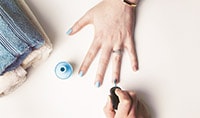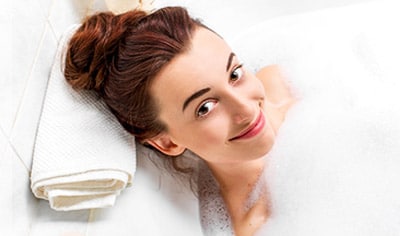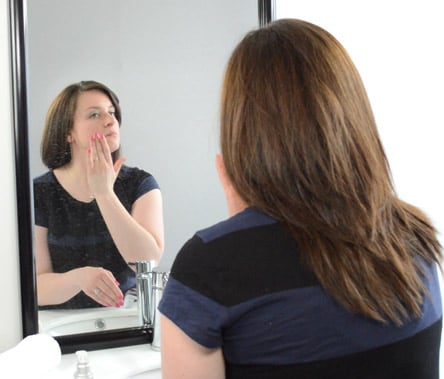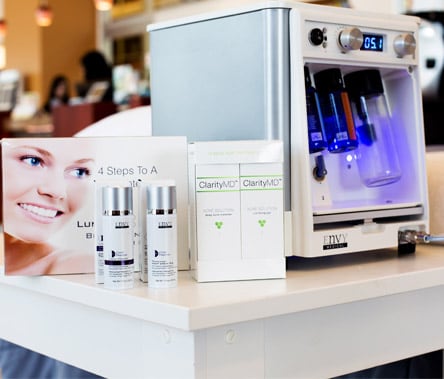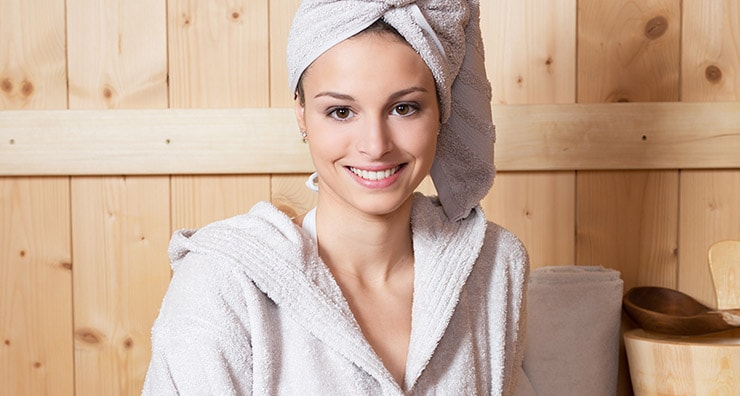
Most cite stress relief and a renewed sense of self-confidence as top reasons to enjoy a day at the spa. Studies show that regular self-pampering sessions are linked to better overall health, more restful sleep and fewer bouts of illness throughout the year. However, as beneficial as spa treatments are, they also pose a health risk due to potential exposure to germs. In this LovelySkin blog, we’ll talk about some common spa dangers and how you can ensure you have the best possible experience during your next visit.
Whirlpools and Footbaths
Many spas do not regularly change the water in their whirlpools, relying instead on chlorine and high temperatures to eliminate harmful organisms. These conditions often only serve to create an environment for bacteria to thrive and for resistant strains to develop.
Water-related spa treatments have been responsible for several outbreaks of deadly disease over the years. The bacteria that causes Legionnaire’s disease, a severe form of pneumonia, has been found in whirlpools aboard luxury cruise ships and traced to thousands of cases in recent decades. Similarly, over a hundred nail salon clients have reportedly suffered serious skin boils from footbaths used during pedicures.
It isn’t always easy to discern the cleanliness of water, so it’s important to look for other clues. Check for signs of sanitation around the facility. Ask around for testimonials from friends and research online reviews.
Bacteria easily enter and infect cuts and scrapes. If you have a cut or abrasion of any kind, we recommend canceling your appointment until your skin has healed. For the same reason, it’s important that you don’t shave your legs or any other area that might come into contact with water the day of your appointment. It’s also a good idea to refrain from shaving the day before.
Saunas and Steam Rooms
Some healthcare professionals believe that saunas and steam rooms help us sweat out toxins we ingest on a daily basis. Regular sessions are often recommended to treat arthritis, fatigue and even mild depression. But much like whirlpools, saunas and steam rooms can be home to harmful germs, and they can also endanger health if misused.
The legal maximum temperature for saunas in the United States is right around 190 degrees Fahrenheit, but many are capable of getting hotter. Accidental burns can occur from touching hot surfaces. These high, moist temperatures may also create an optimal environment for bacteria, mold and fungi to thrive, putting you at risk for skin conditions like athlete’s foot and warts, plus various other illnesses. Dehydration is a real concern for sauna users, and the drinking water that is found in some saunas can be contaminated and not fit for consumption or bathing.
You should always use the sauna at your own risk. Wear a towel or swimsuit, and put down another before sitting down as an extra preventative for coming into contact with germs. You should also always wear shower shoes. Limit sessions to 15 minutes, and be sure the temperature does not reach over 190 degrees Fahrenheit (lower is better). Look for the directions that are often posted on the wall outside a sauna or ask an attendant for assistance. Saunas can vary greatly and you’ll want to be sure you’re using it safely and correctly. Those with inflammatory skin conditions should avoid the sauna altogether. The heat and moisture could irritate psoriasis or eczema further and bacteria can enter easily through sores and raw areas of skin.
Tools and Devices
The tools and devices used during manicures, pedicures and facials can harbor oil, skin cells and other debris, plus harmful bacteria, fungi and viruses. Many salons and day spas are not diligent about sanitizing tools between clients, exposing them to numerous diseases. Common conditions transmitted through unsterile tools includes warts, athlete’s foot and staph infections.
Though it is illegal in some states, nail technicians often clip the cuticle as part of a regular manicure procedure. Cuticles serve an important purpose for overall nail health, and when they are clipped, they are exposed to fungal and bacterial infections.
Gel manicures require the use of UV light during the drying and setting process. The bulbs used in these lamps may be compared to those used in tanning beds. Frequent use can cause premature signs of aging, such as collagen breakdown, wrinkles and hyperpigmentation. These lamps also increase your risk of skin cancer and can worsen certain skin conditions.
Be sure to check for signs of cleanliness and sanitation, and ask how tools are sterilized between uses. To avoid cross-contamination altogether, you may want to invest in your own set of nail tools and polishes to carry back and forth with you between appointments. Before your appointment begins, request that your technician not cut your cuticles, and if you plan on getting a gel manicure, be sure to apply sunscreen to the backs of your hands at least 15 minutes prior to UV exposure.
It should be noted that the chemicals found in nail glues and polishes have been connected to cancer, birth defects and reproductive issues in veteran nail technicians. Even breathing in fumes for a short time can cause various respiratory problems, with asthma or allergy-like symptoms. For the safety of yourself and others, be sure that your salon is properly ventilated and has sufficient air circulation.
Staff Certification
More and more medi-spas are appearing all the time, and you may have even noticed one or two setting up shop in your area. These establishments are not closely regulated and they may not even have a certified cosmetic surgeon on staff. Yet in addition to facials, waxing and manicures, many still offer serious cosmetic procedures such as Botox, laser hair removal and liposuction. These are often performed by aestheticians with no formal training in facilities that do not support medical emergencies. Many unsuspecting individuals, enticed by lower price points and convenient walk-in appointments, have suffered serious maladies from botched medi-spa procedures, including permanent scarring, blindness and even death.
There are certain cosmetic procedures that you should never elect to have done at a medi-spa. These include injections, like Botox and fillers, laser treatments, such as laser hair removal and laser resurfacing and any form of fat removal, like liposuction. For these, always seek the care of a board-certified cosmetic surgeon. For regular facials and microdermabrasion, we recommend patronizing a reputable spa affiliated with a dermatology or cosmetic surgery practice.
Always look for your aesthetician’s up-to-date certification. Most respectable spas will have these displayed in plain view, however, if you don’t see certificates and licenses, don’t hesitate to ask. Your health and happiness could depend on it!
Do you have a question about spa safety? Let us know in the comments section.

About the Author
Stepha is a copywriter at LovelySkin. She loves poetry, baking and experimenting with new makeup.
Other Posts by StephaHow Face Creams with Retinol can Transfo...
Discover Off-Label Uses for Your Skin Ca...
Follow us on social
Follow us on social networks and be one of the first to learn about sales, giveaways, and free samples

